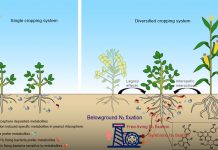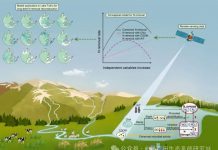Chaopu Ti, Bo Gao, Yongxia Luo, Xi Wang, Shuwei Wang, Xiaoyuan Yan. Isotopic characterization of NH xN in deposition and major emission sources. Biogeochemistry, 2018, 138(1):85-102
Abstract
Large amounts of atmospheric N deposition cause negative effects on ecosystems. Effective mitigation strategies require the sources of N deposition to be identified and the contributions from individual sources to be quantified. Determination of the isotopic composition represents a useful approach in source apportionment. In this study, the δ15N-NHx of wet and dry atmospheric deposition and the main NH3 emission sources were analyzed at an urban, a suburban and a rural site in the Taihu Lake region of China. The 2-year average δ15N- NH+4NH4+ of precipitation was − 3.0 ± 2.3, − 3.1 ± 2.8 and − 0.5 ± 2.8‰ for the urban, suburban and rural sites, respectively. These values were much lower than the corresponding values for particulate NH+4NH4+ (15.9, 15.2 and 14.3‰ at the urban, suburban and rural sites, respectively), and much higher than those of gaseous δ15N-NH3 (− 16.7, − 18.2 and − 17.4‰ at the urban, suburban and rural sites, respectively). The δ15N-NH3 of NH3 from the main emission sources ranged from − 30.8 to − 3.3‰ for volatilized fertilizer, from − 35.1 to − 10.5‰ for emissions from a pig farm, and − 24.7 to − 11.3‰ for emissions from a dairy farm. Temporal variations of deposition δ15N-NHx indicated that δ15N-NHx values were lower in summer and autumn, but higher in winter and spring for both precipitation NH+4NH4+ -N and gaseous NH3-N. Weather conditions such as temperature and precipitation significantly influenced the spatial and temporal distribution of isotope values of the deposition. Analysis of δ15N-NHx in deposition and emission sources identified volatilized fertilizer and livestock wastes as the origins of both gaseous NH3-N and precipitation NH+4NH4+ -N over the region. A stable isotope mixing model estimated that volatilized fertilizer and animal excreta contributed more than 65% to precipitation NH+4NH4+ -N, more than 60% to particulate NH+4NH4+ -N, and more than 75% to gaseous NH3-N.








